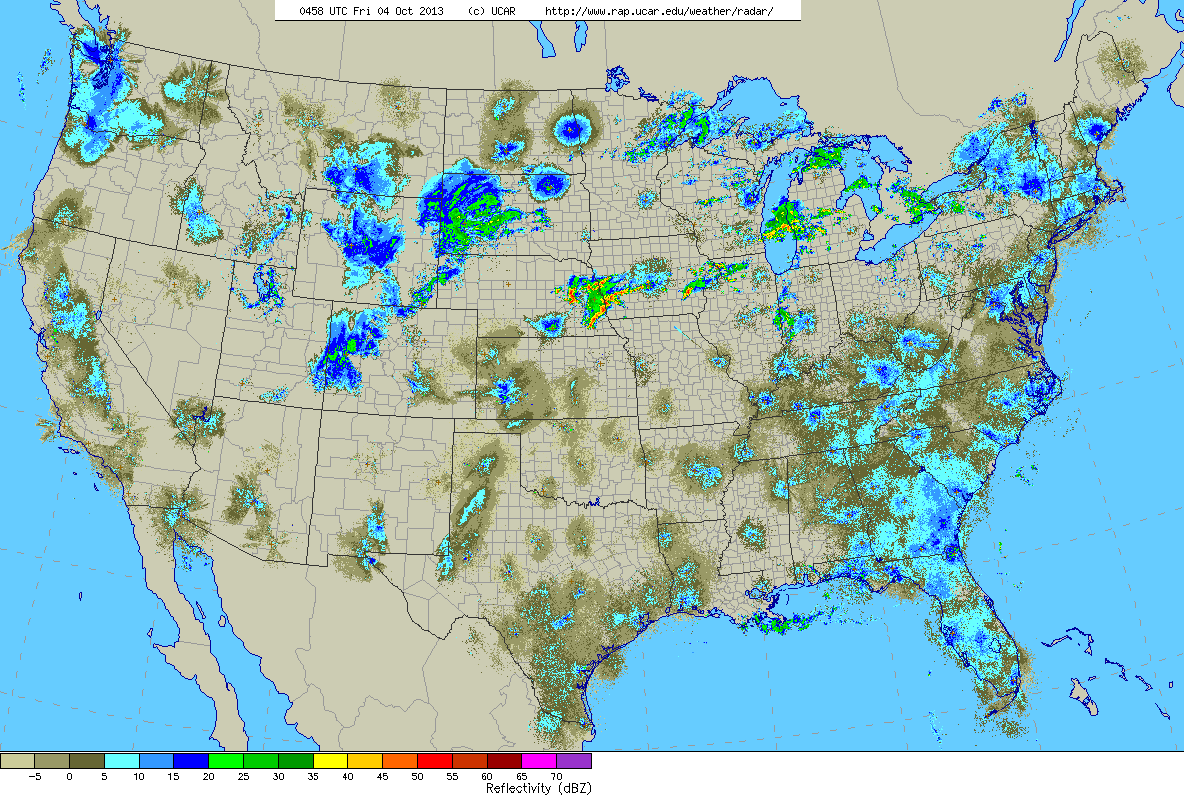Continental Summary:
Pulses of light to moderate movements continued in the West, as a large movement in the East saw large numbers of birds moving across the region and transiting through and to the Southeast. Birds on the move this week included Canada Goose, Hermit Thrush, Golden-crowned and Ruby-crowned Kinglets, Yellow-rumped and Palm Warblers, Song, Swamp, and White-throated Sparrows, and Dark-eyed Junco.
West
Light to moderate movements were scattered across the region to begin the forecast period, particularly in the Pacific Northwest, portions of the Great Basin, and from central California South and East through the Desert Southwest. These movements became increasingly sparse in extent and intensity by Monday night before a new pulse of more moderate movements began in the Pacific Northwest on Tuesday night. This set of movements was primarily West of the coastal mountain ranges, limited to sparser and lighter movements farther East by scattered precipitation. Birds on the move this week included Red-necked Phalarope, Warbling Vireo, American Robin, Ruby-crowned Kinglet, Yellow-rumped Warbler, and Western Tanager.
Great Plains
A pulse of moderate to locally heavy movements in North Dakota began the forecast period, continuing farther South into the southern Plains. This set of movements was limited largely by scattered precipitation and unfavorable conditions bisecting the region. However, these conditions departed by Sunday night, when widespread moderate to heavy movements occurred over the eastern portion of the region from the Canadian border to Oklahoma. Following this large-scale movement, a more local and less intense, primarily moderate pulse occurred in the northern Plains on Tuesday night and in the northern and central Plains on Wednesday night. A strong frontal boundary shut down movements to end the period. Birds on the move this week included Bufflehead, Sharp-shinned Hawk, Northern Harrier, Red-headed Woodpecker, Yellow-bellied Sapsucker, Northern Flicker, Hermit Thrush, Ruby-crowned Kinglet, Yellow-rumped and Orange-crowned Warblers, Savannah, Song, Swamp, Lincoln’s, Fox, Harris’s and White-throated Sparrows, Dark-eyed Junco, and Purple Finch.
Upper Midwest and Northeast
Locally light to moderate movements kicked off the weekend in changeable conditions across the region, before the passage of a low pressure system across the Ohio River valley spawned moderate to heavy movements in the upper and central Mississippi River valley on Saturday night. These movements built in extent and intensity on Sunday night, almost exclusively East of the Great Lakes and Ohio River valley. These movements spread East on Monday and Tuesday nights as the low continued to move offshore and favorable conditions for migration built in behind the passing front. By the middle and end of the week, conditions were less favorable for movements as some lingering instabilities over the northeastern Appalachians limited the extent and intensity of movements in many areas to light to moderate. Birds on the move this week included Canada Goose, Winter Wren, Hermit Thrush, Golden-crowned and Ruby-crowned Kinglets, Yellow-rumped Warbler, Red-winged and Rusty Blackbirds, Eastern Towhee, Field, Chipping, Song, Swamp, White-crowned, and White-throated Sparrows, and Dark-eyed Junco.
Gulf Coast and Southeast
Light to moderate movements East of the Appalachians began the period. This pattern quickly changed as favorable conditions spread over the western reaches of the region on Saturday night bringing moderate to heavy movements to Texas. These moderate to heavy movements expanded to almost the entire region West of the Mississippi the following night, and intensified by Monday night in areas East of the Mississippi River and North of the peninsular Florida. Some of these movements were very heavy, particularly in the southern Appalachian and in the Florida Panhandle area. By Tuesday night movements had diminished in intensity but continued as widespread moderate to locally heavy movements across the region including Florida. The forecast period ended with moderate to heavy movements continuing primarily East of the Mississippi River and into peninsular Florida as conditions remained favorable for flights over these areas. Birds on the move this week included Yellow-bellied Sapsucker, Eastern Phoebe, Blue-headed Vireo, Ruby-crowned Kinglet, Gray Catbird, Black-throated Green, Black-throated Green, Yellow-rumped, and Palm Warblers, Indigo Bunting, and Lincoln’s Sparrow.





